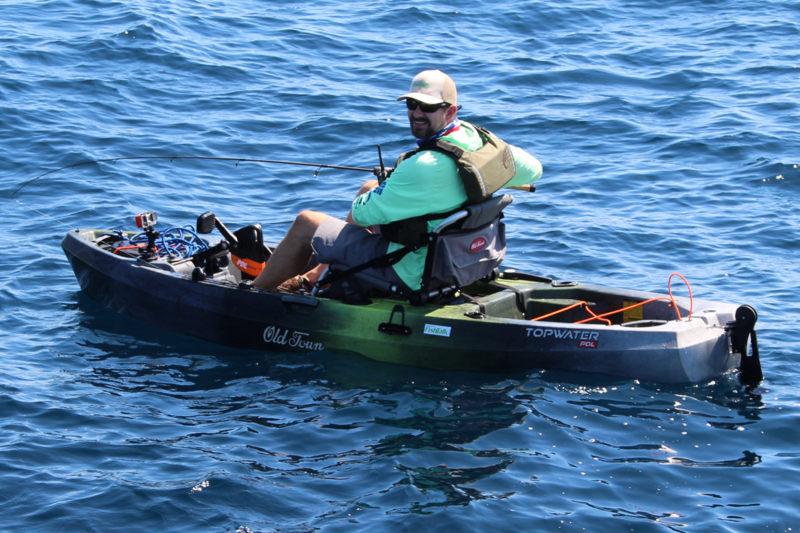As spring approaches and people are thinking about new potential kayak fishing adventures, many of them seem to be considering mother-shipping a kayak to far off fishing grounds in search of an epic catch of one sort or another. In the past few weeks I’ve been asked about hauling a kayak to the Targets for cobia, to the open Bay for big bull redfish, and to the remote salt islands of the Tangier to fish for speckled trout.

Readers may remember that in September of 2020 I teamed up with a couple of our kayak fishing pros, Zach Ditmars and Eric Packard, to take a kayak out 30 miles into the open Atlantic and catch mahi-mahi (Check out Adventure Fishing if you missed the article and video). And while that certainly doesn’t make me a mother-shipping pro by any stretch of the imagination, we did learn a lot of lessons that you ambitious kayak anglers might want to know about before setting off on your own new adventures.
- If you have your choice of kayaks, go small. While larger watercraft may seem best for bigger waters, they’re also a bear to get on and off the boat. Actually, even a small one is. Ease the task by tying lines on the bow and stern of the kayak, so you can lower it and lift it without having to lean down to the water’s height.
- Bring the ratchet straps you use to secure the kayak to your vehicle, and use them to strap the kayak down firmly against rails, bulkheads, and T-top supports. Also bring along a blanket to lay between the kayak and the fiberglass, to prevent either from getting beaten up. Be extra careful of the rudder, which can be easily damaged if it comes in contact with fiberglass or pipework when the boat is moving, during the launch, or during retrieval.
- Practice launching and retrieving the kayak in calm, protected water, first. Every boat is different, and it’s best to learn the particulars of what you may need to do (like moving forward or aft to get away from a rail-mounted rodholder) in a more controlled environment.
- After cruising to your hotspot consider holding off on launching until you locate the fish. We hit five or six different locations where we might have caught one or two mahi, but decided against launching the kayak until we found the mother lode. By doing so, we stayed mobile and were able to cover a lot of ocean. When we did finally locate a big school, rather than catching a fish or two we caught over a dozen and everyone took multiple turns fishing from the micro-boat.
- Obviously, you won’t want to let the kayak get too far from the mother ship in open waters. But as an added safety measure the angler should be equipped with a waterproof handheld VHF radio so you can communicate easily if need be.
- When you have a serious beast on the line and you want to land it rather than unhook and release the fish while it’s still in the water, guide the fish back to the mothership. Landing a very large fish on a kayak can be downright dangerous (just think about trying to control a 50-inch cobia in the confines of a kayak) and is likely to lead to disaster. Rather than risking it, if you can get the fish close to the big boat someone can then gaff or net it as appropriate and greatly reduce the danger-factor.
Spring is here, people, and summer is not far behind. If you want to cap off your kayak fishing season with a big-time adrenaline blast, mother-shipping to monster fish might just be the best way to do it. Be careful, and be safe — and enjoy the adventure.
-By Lenny Rudow